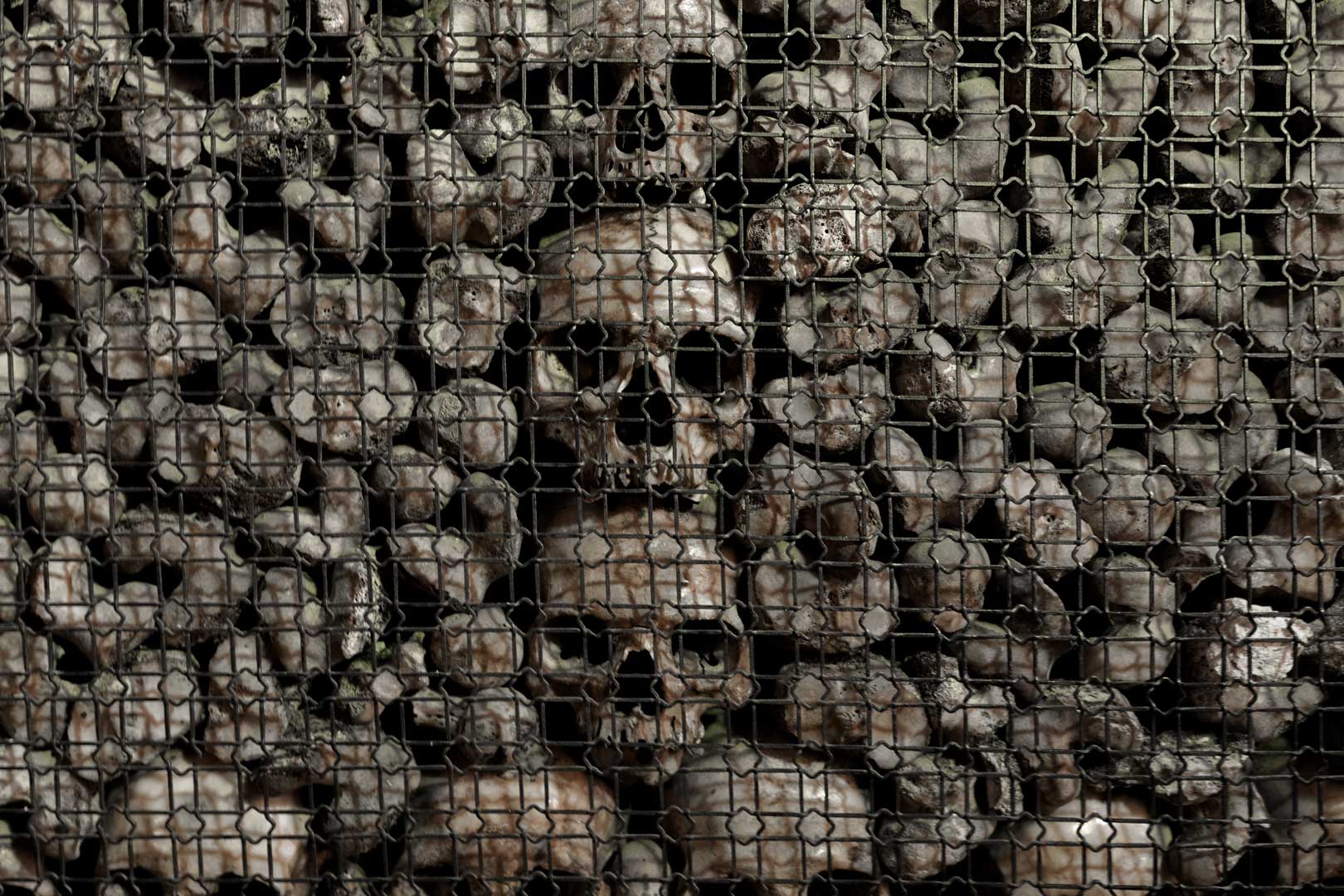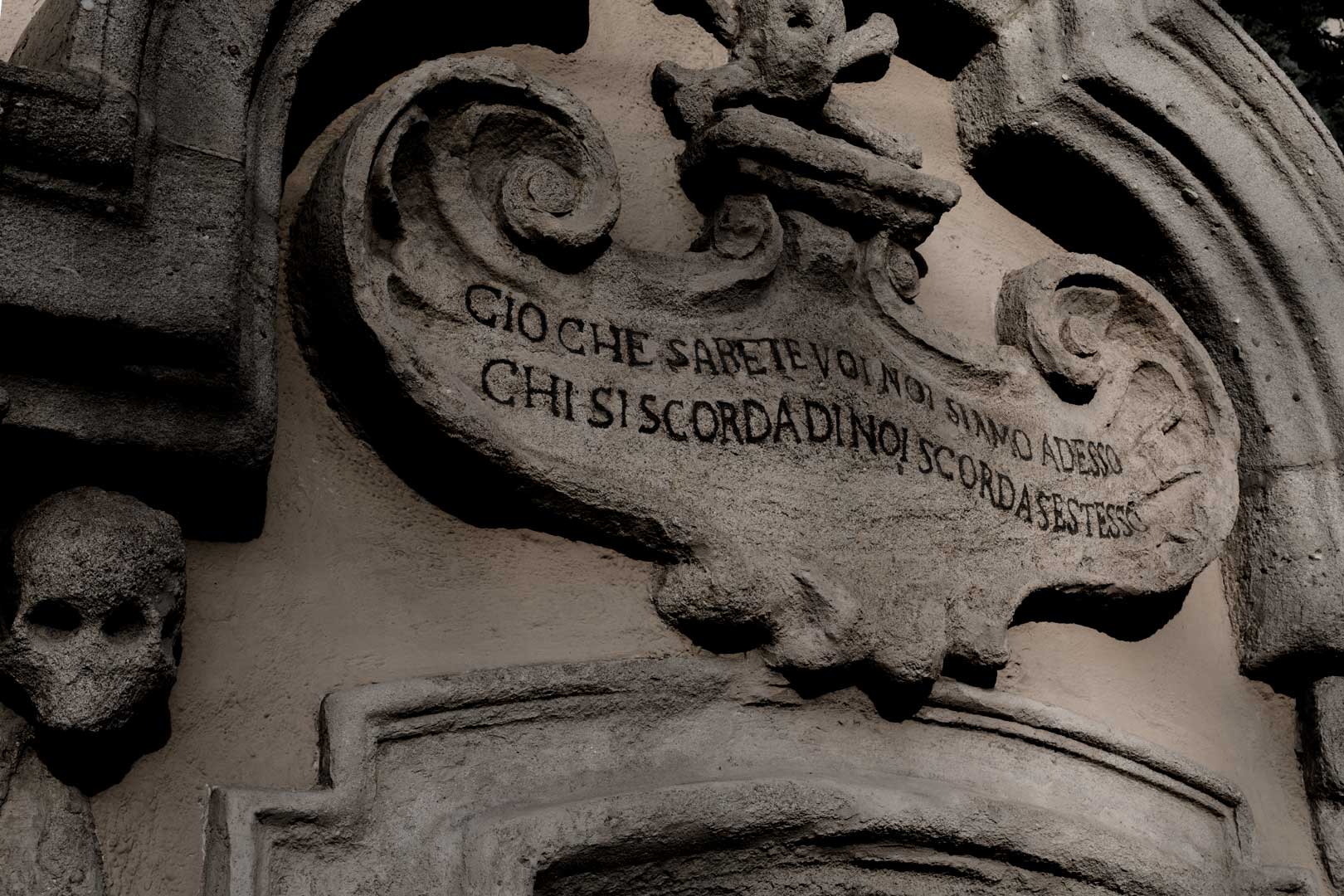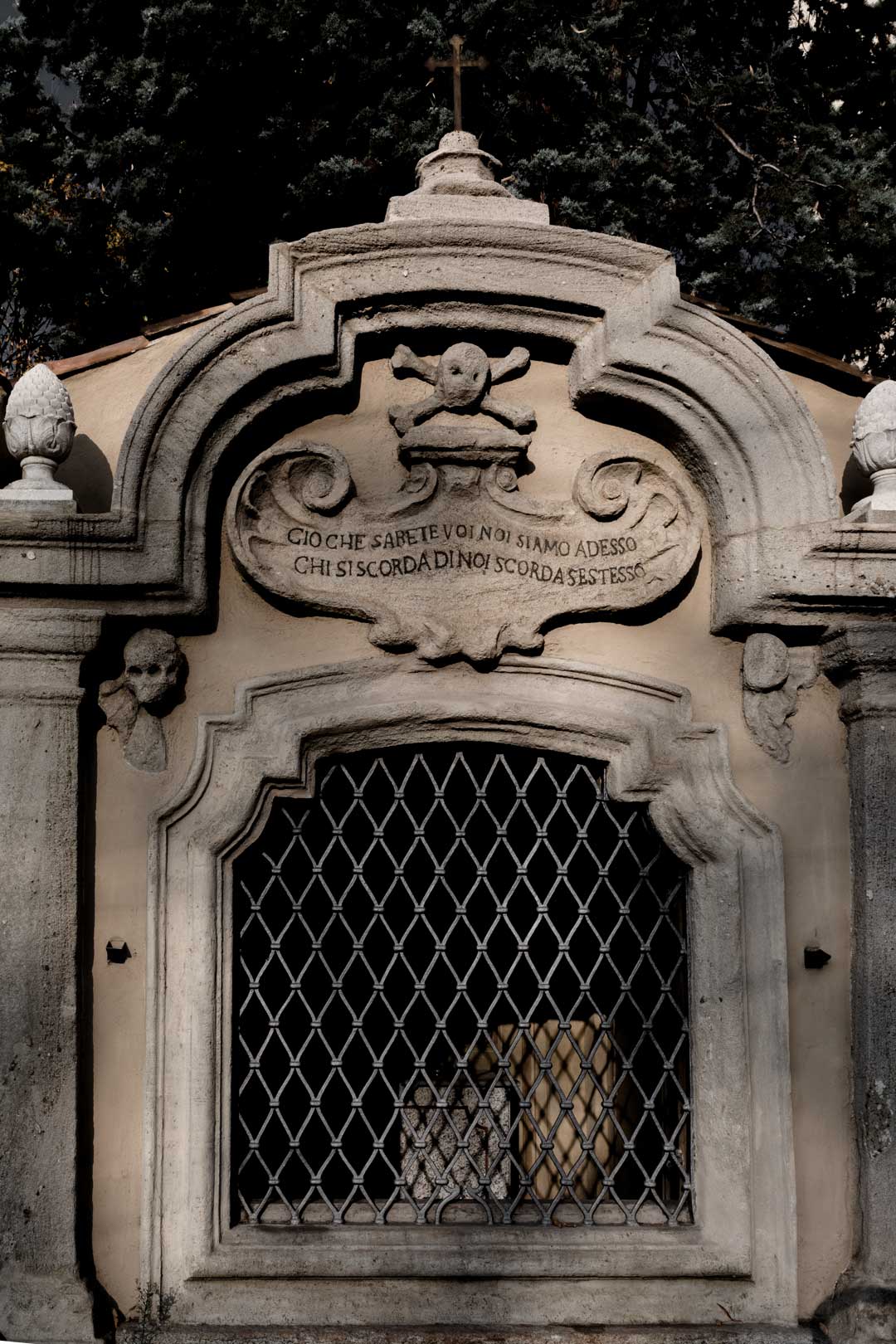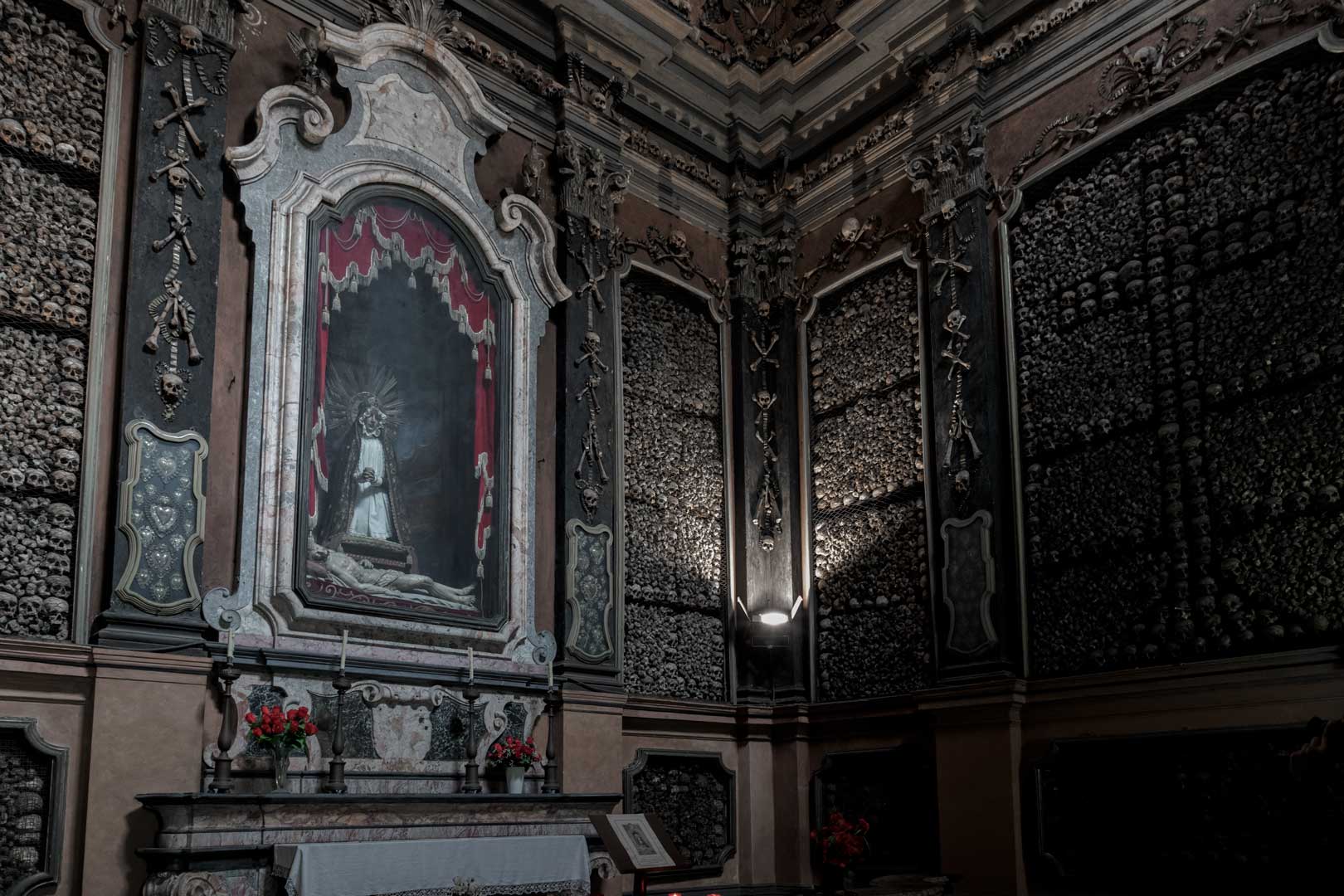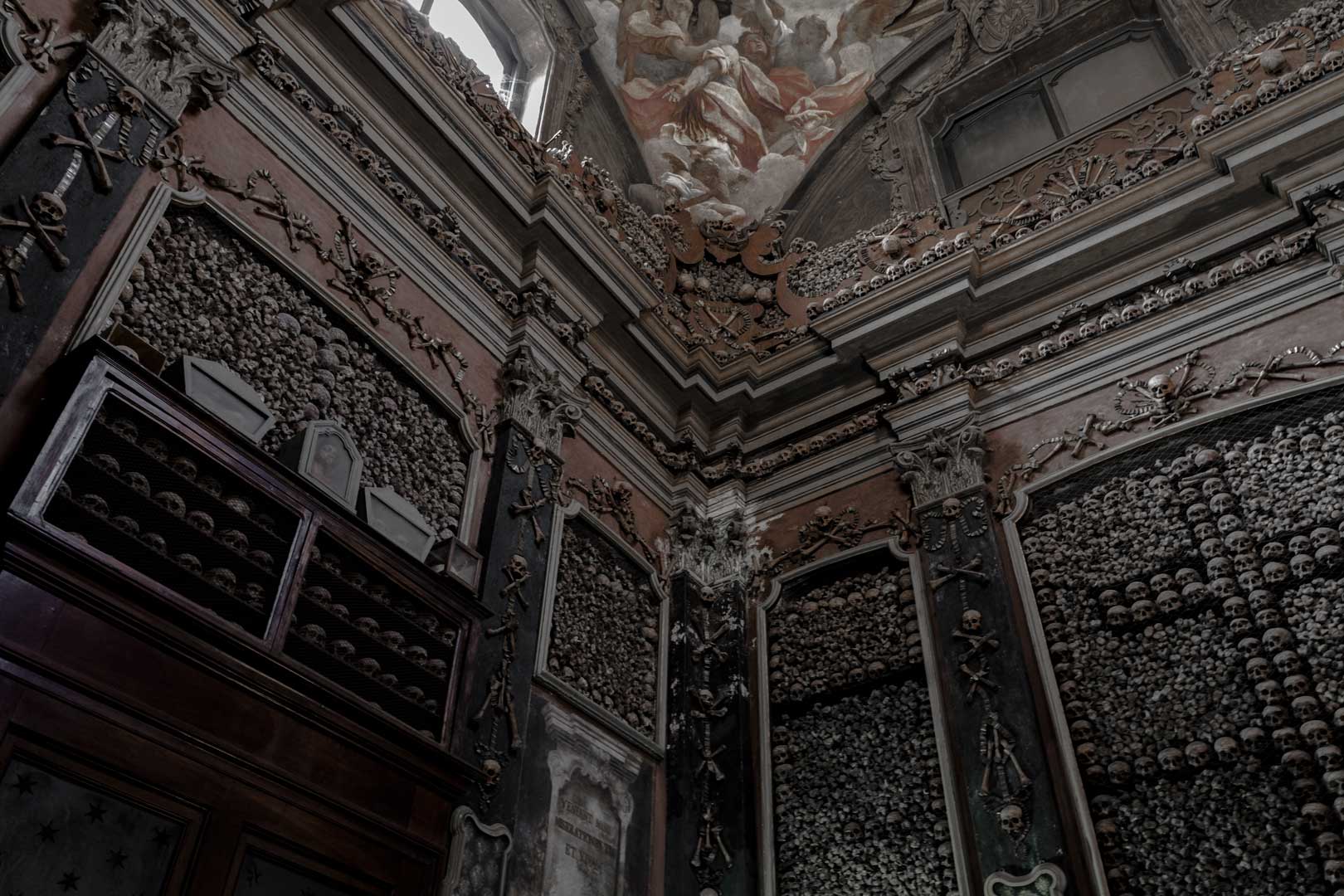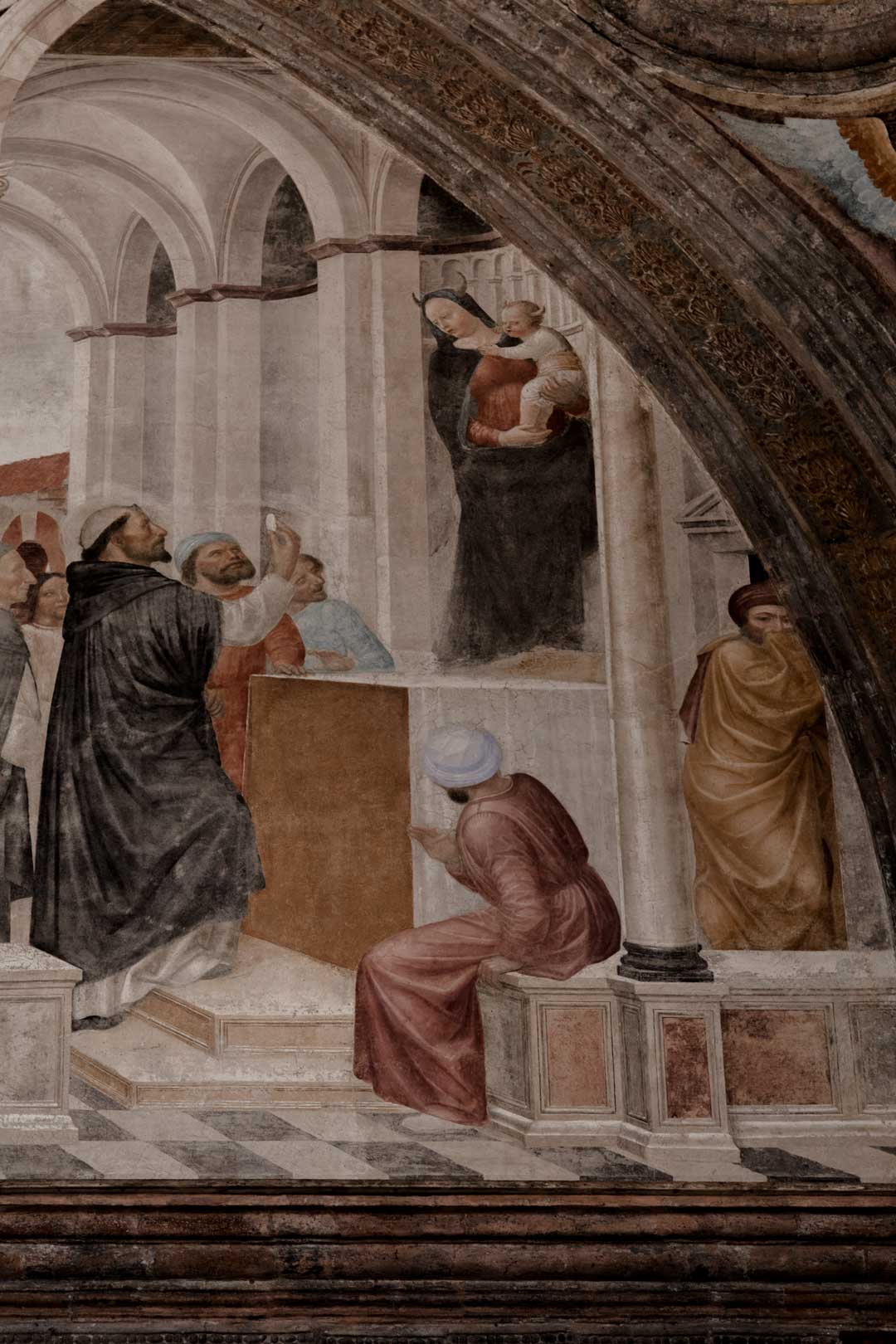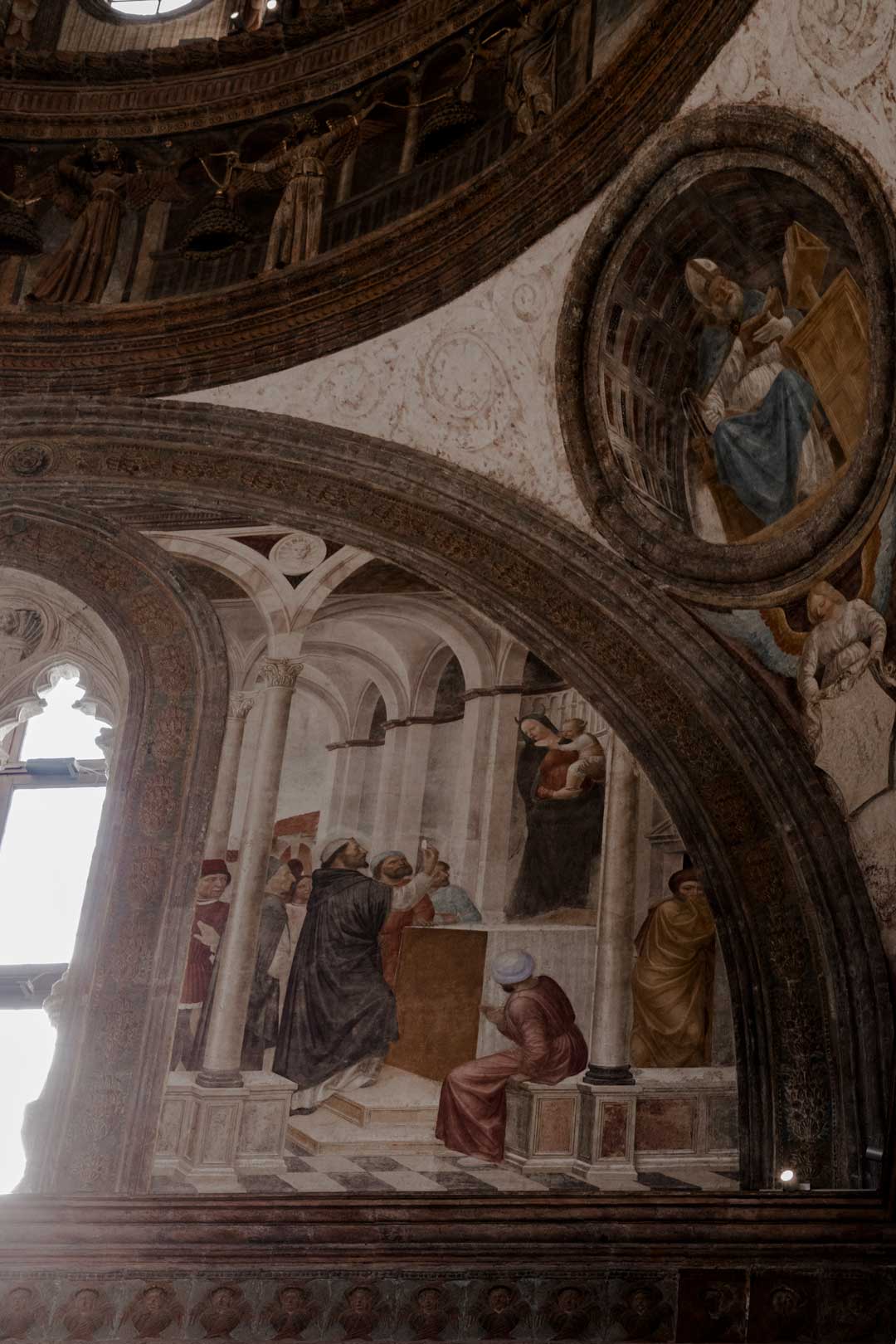Per leggere l’articolo in italiano, cliccare qui.
Halloween isn’t exactly an Italian celebration but nowadays it kind of belongs to Italy. We are not even sure on how to celebrate it here because the classic “trick or treat” is somewhat frowned upon when setted in our apartament complexes full of old ladies and college students. But even without candy or pranks played on the unaware neighbors, we Italians know how to party and Halloween became just another excuse to go to the club with our face painted in white and funny albeit awkward costumes.
But what about the old fashioned fear? We of Flawless Milano love only the most genuine things and believe that, before going dancing, during the Witches’ Night you should rediscover how does it feel to chill down to your bones. That’s why we wrote a list of the five spookiest places in Milan: visit them like pilgrims and you will find burned alive witches, hidden plague-infested graveyards, demonic possessions, serial killers and churches made out of human bones.
THE CHAPEL OF THE DEAD IN PIAZZALE AQUILEIA
Piazzale Aquileia
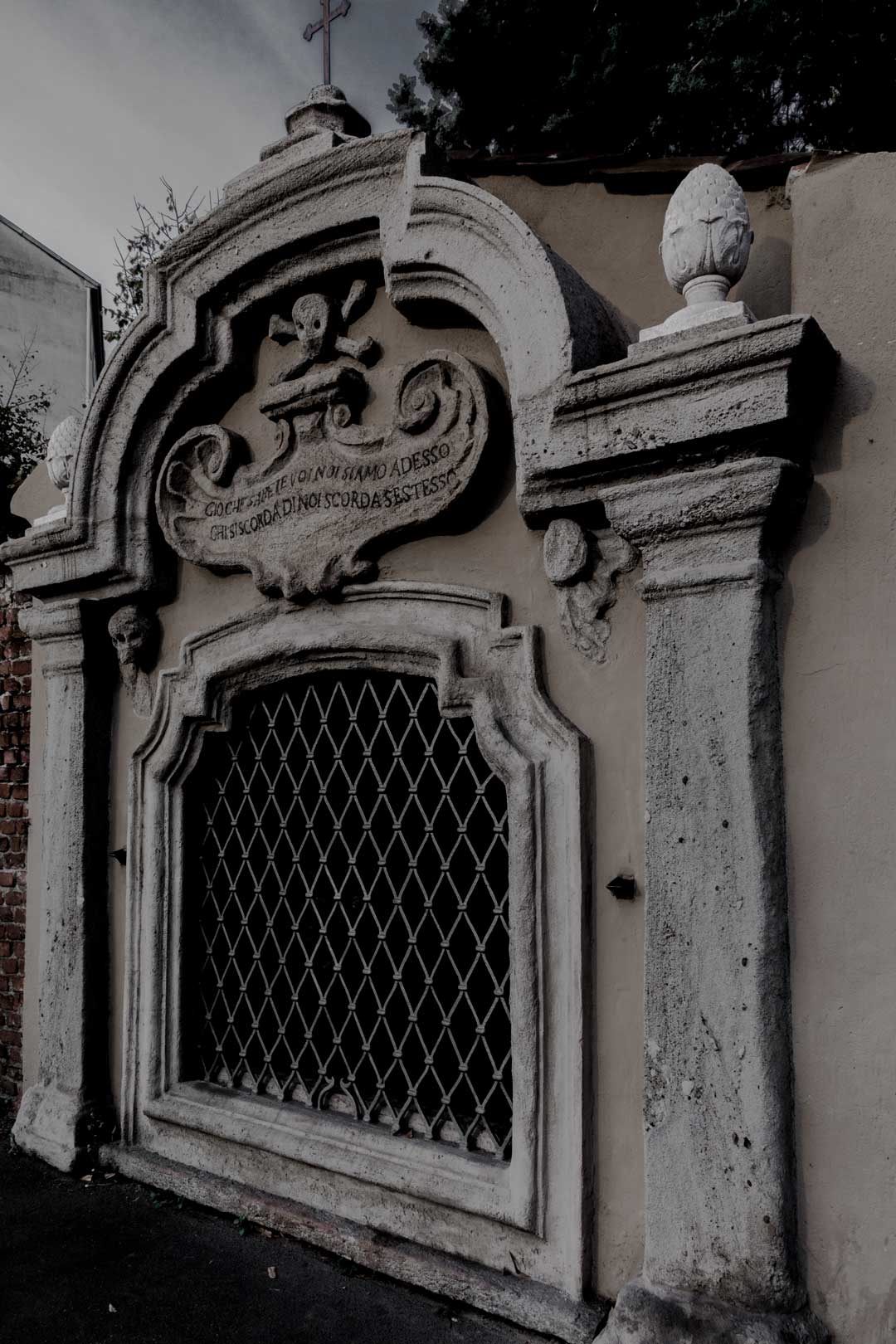
Start your path in Piazzale Aquileia where, at the entrance of Viale S. Michele del Carso, you will find a peculiar white stone structure engraved with skulls in which there’s a grate. If you look inside it you’ll see the remains of men, women and children killed by the plague four centuries ago. Over the grate a phrase written in the stone: “You will be like we are now, who forgots us forgots himself” and a pile of bones inside it.

This chapel is the last relic of a hidden graveyard over which is built most of the area of Corso Magenta located outside the circle of the ancient city walls. There, fro three centuries, the dead were buried, including plague victims and those who were sentenced to death. The legend says that the restless ghost of Carlo Sala walked among the tombstones, he was an heretic and thief that desecrated something like thirty churches before being captured, put to death and buried in the hidden cemetery. Until today, there’s someone who says to have seen the ghost; a massive, pale man without clothes (Sala was a friar that stripped himself of the robe) that pries on those who pass by, lurking behind bushes and trees only to creep up behind them and whisper in their ear if they know where his burial is.
THE DIABOLIC VIRGIN MARY OF PORTINARI CHAPEL
Piazza Sant’Eustorgio, 3
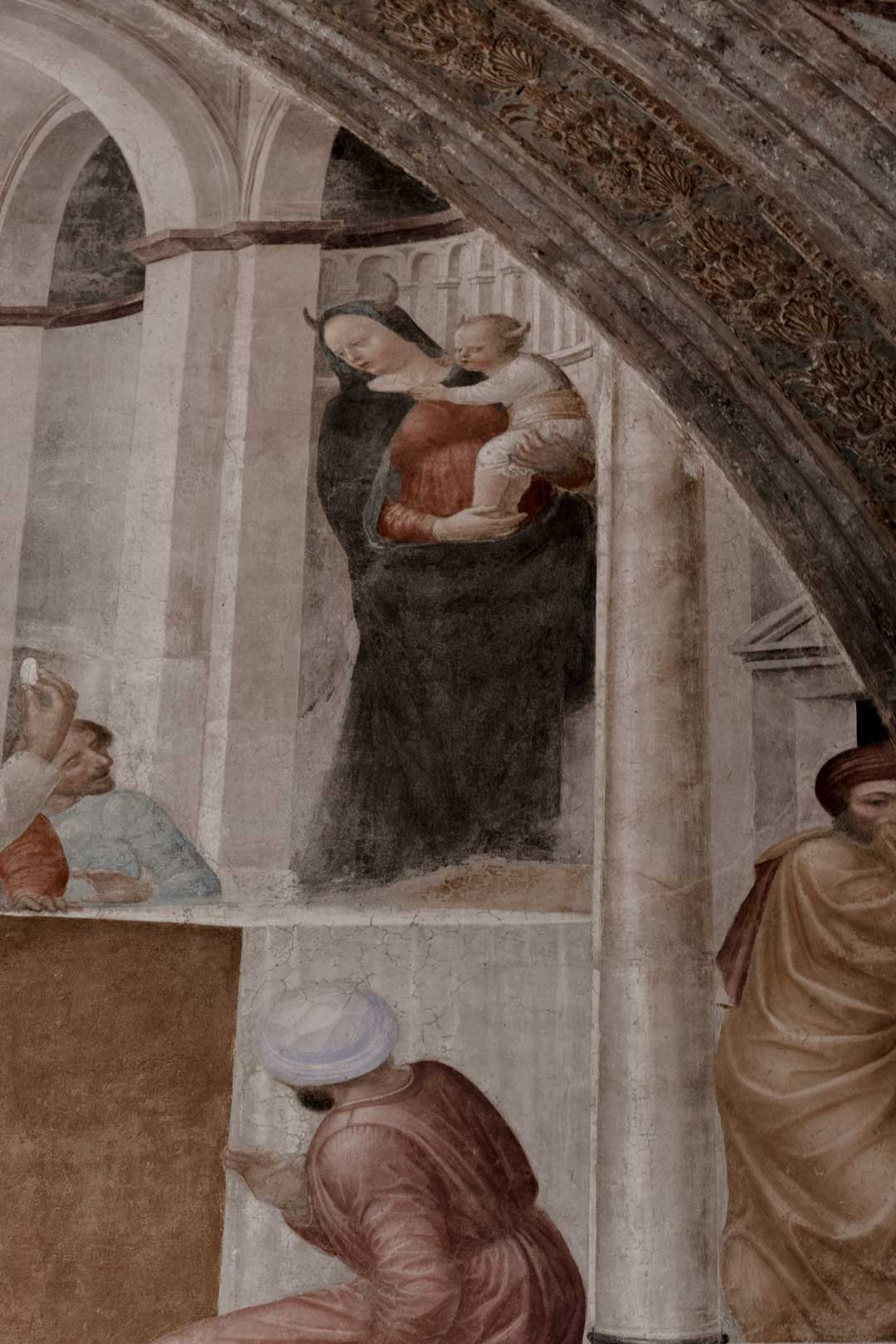
Frescoed by Vincenzo Foppa, the Portinari chapel is one of the treasures of St. Eustorgius: a Renaissance jewel that, besides the alleged bones of the Three Mages, holds the body of St. Peter from Verona, who was killed with a knife to his head by an heretic during the Middle Ages. Among the many miracles attributed to the saint, there’s the one of the “false Virgin Mary”, an episode that Foppa depicted on the right wall of the chapel.
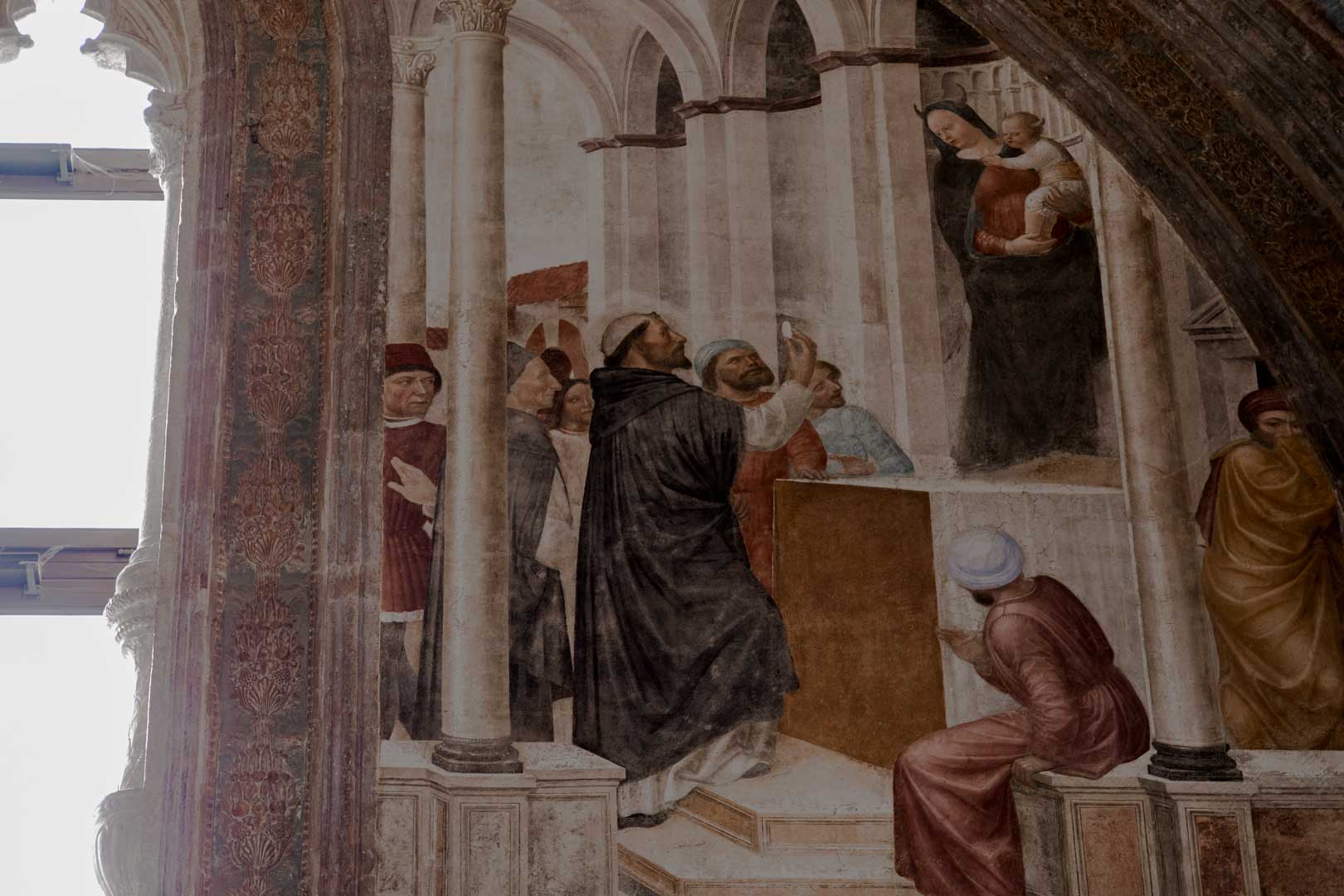
According to the legend, while he was celebrating mass, the saint realized that the devil took the shape of a statue of the Virgin Mary and exorcised it with the Holy Bread, in front of which the demon revealed its true nature and fled. Today this story is not very well-known and many people ask themselves what does the Virgin Mary with those horns on her head mean and what is does there, in a church that keeps the relics of a saint.
THE BLOOD-DRENCHED PARK
Parco delle Basiliche
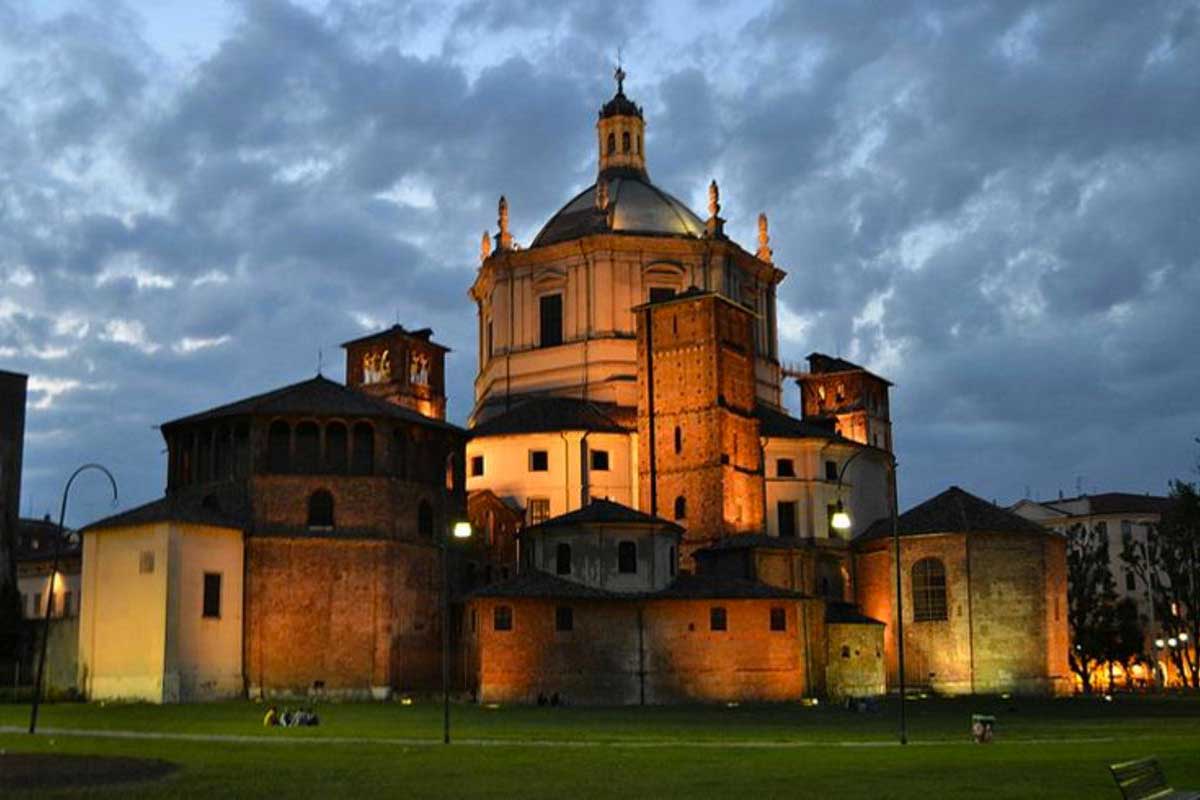 Photo credit © Pinktrotters
Photo credit © Pinktrotters
The Parco delle Basiliche with Piazza Vetra are one of the favorite place of those who live or work in the area, near Colonne di S. Lorenzo, but what many of the tourists lying in the sun don’t know is that the green lawn where now even the children play was the theater of countless deaths since ancient times. The piazza was named after the “vetraschi”, that is the leather and fur makers of the town, that used to dump the liquid wastes of their shops in a gutter in the middle of the piazza. Blood and animal remains were scattered all over the place, the moisture raised thick and foul-smelling mists at night. But there’s more because it is in the present piazza Vetra that the capital punishments of witches and plague-sowers took place, the most famous of which was Gian Giacomo Mora. A great number of men and women were beheaded, hanged and burned alive in what now is Parco delle Basiliche. And that spilled blood cursed the soil for many years: the area later became a den for crime and a theater of homicides, the most famous of which was the one of “poor Rosetta della Colonnetta” a young girl who was brutally killed right before the ancient house of Gian Giacomo Mora. The last deaths happened during the ’70s when a shooting between the police and the gang of Renato Vallanzasca left two corpses on the ground.
ST. BERNARDINO’S OSSUARY
Via Verziere, 2
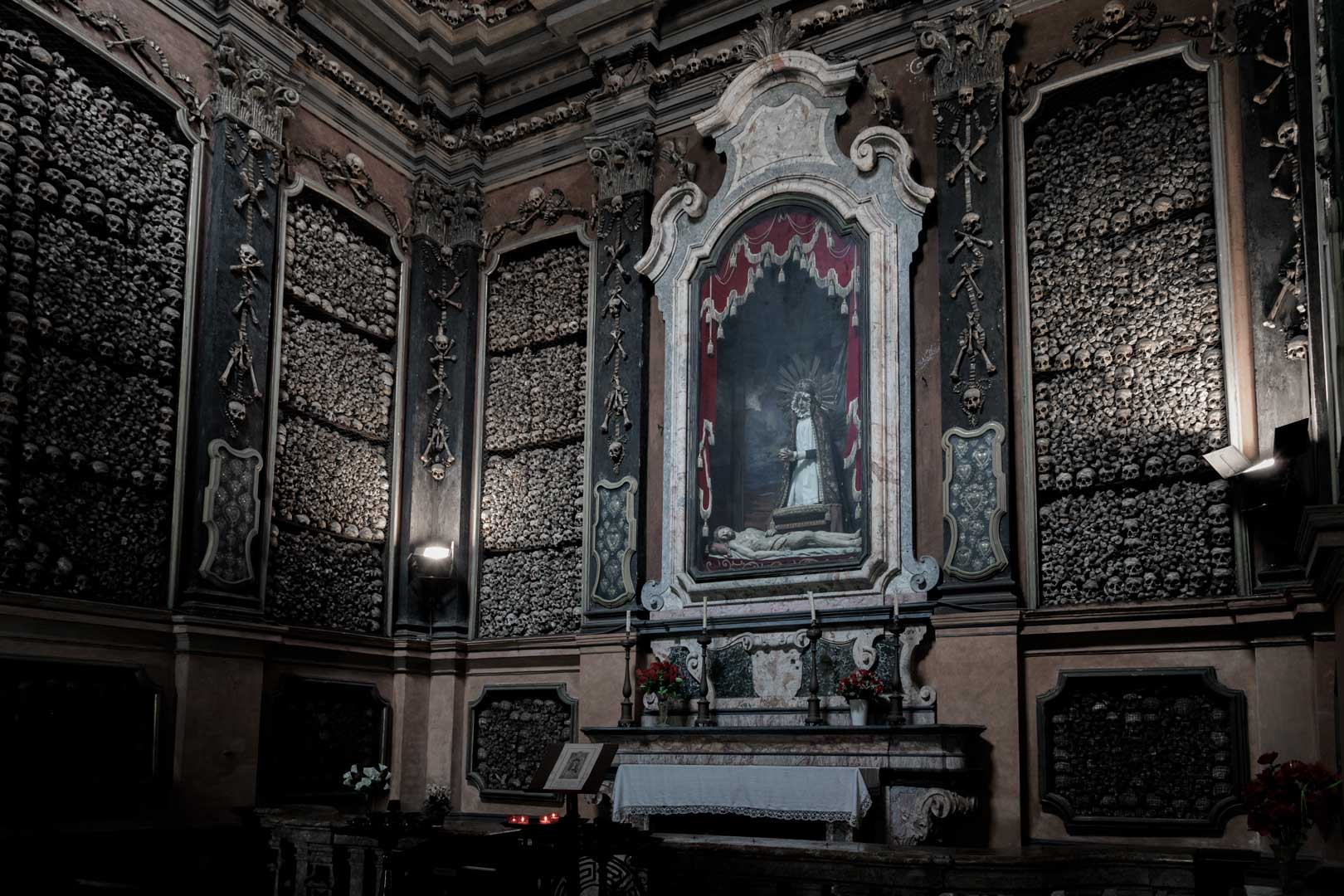
Built in the mid-17th century, St. Bernardino’s ossuary is monumental and unsettling. The building has a square layout and its walls are covered in thousands of human bones fixed in the marble and decoring doors and cornices. They’re the bones of noblemen and murdered, of pious men and lepers dug up from their original graves. The vigilant eyes of Our Lady of Sorrow oversee the spectacle, dominated by the huge frescoed ceiling. This macabre display belonged to the 17th-century tradition of memento mori, that is the belief that contemplating human remains helped in reflecting on the sense of life.
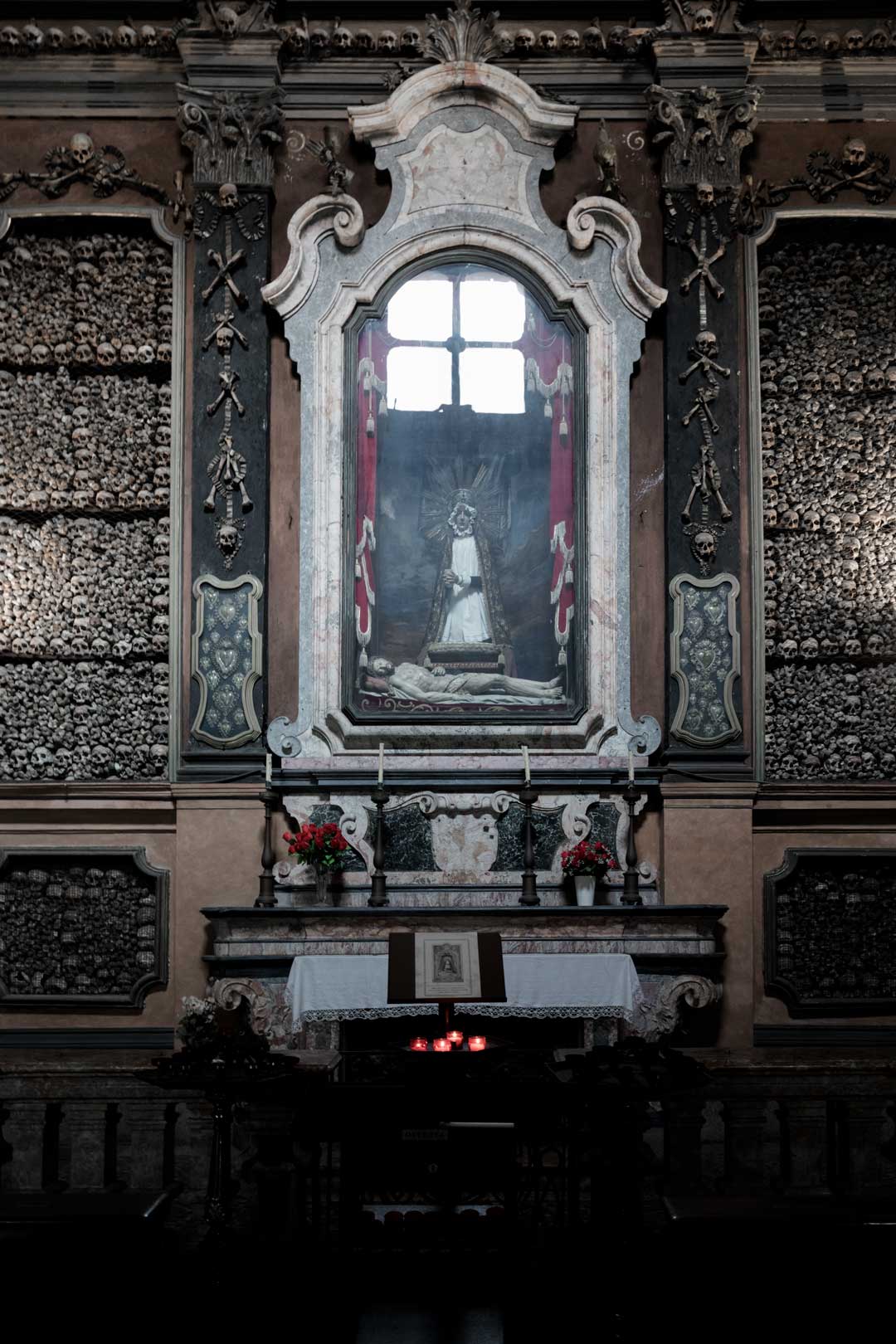
The legend says that every 2nd November, at night, the skeleton of a little girl killed by leprosy creeps down to the center of the Ossuary and starts dancing bringing with her all the others in a startling dance of the dead which will induce madness in whomever watches it.
THE NARROW VIA BAGNERA
Via Bagnera
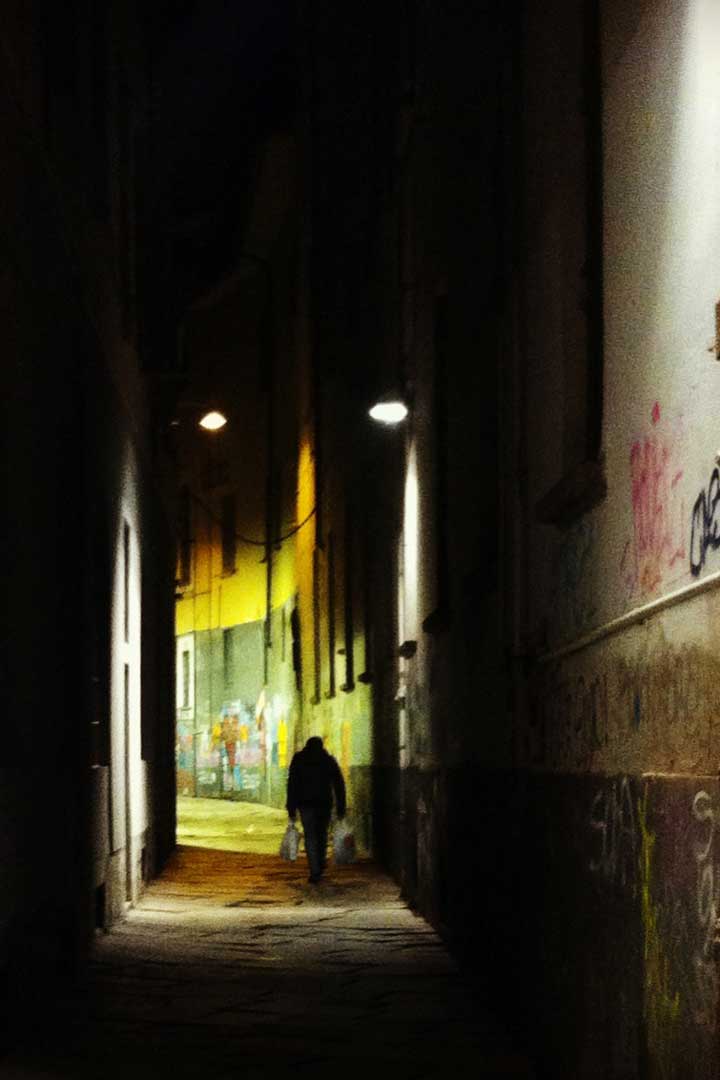
The Stretta (in Italian means “narrow alley”) is placed behind via Torino and it’s famous for two reasons: it is the narrowest street in Milan and also the place where the first Italian serial killer walled in the dismembered bodies of his four victims. Apparently a shy and all-good stoker, Boggi hid a monster inside of him. He killed for the first time at the age of 49 after a past as base con man: the body of his first victim was chopped to pieces and hidden in the basement of the apartment complex he lived in, in Via Bagnera.
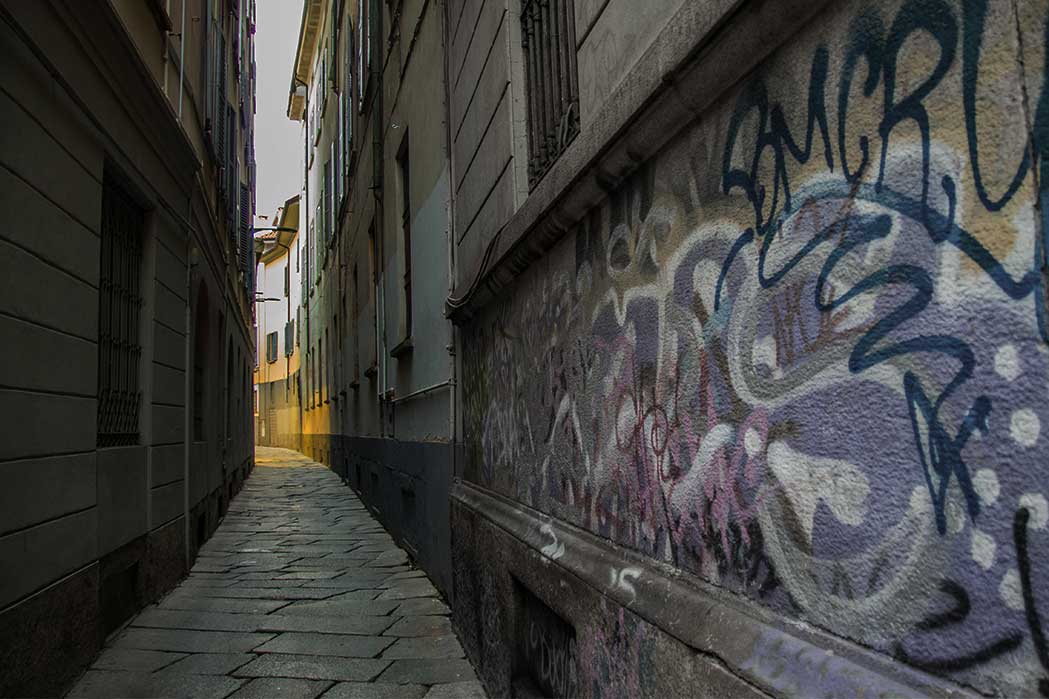
Then it was the turn of his landlady, an old woman whose disappearance activated the inquiries of the Carabinieri. The enquieries brought to light the fact that Boggie had falsified the testament papers of the woman before her demise and an attempted axe-murder for which he was sentenced to a three-months detention in an asylum for the criminally insane. Then some witnesses turned up and said to have seen Boggia with bricklayer’s tools in the basement of his house. When said basement was examined by the Carabinieri, they found the mutilated corpses inside the walls. Boggia hanged for this but still to this date the legend says that every 8th April, in the anniversary of his death, his ghost scratches with bloody nails the walls of the alley, looking for the burial site of his victims.


 I Ristoranti a Milano da provare a Gennaio
I Ristoranti a Milano da provare a Gennaio  Flawless Milano The Lifestyle Guide 2024
Flawless Milano The Lifestyle Guide 2024 